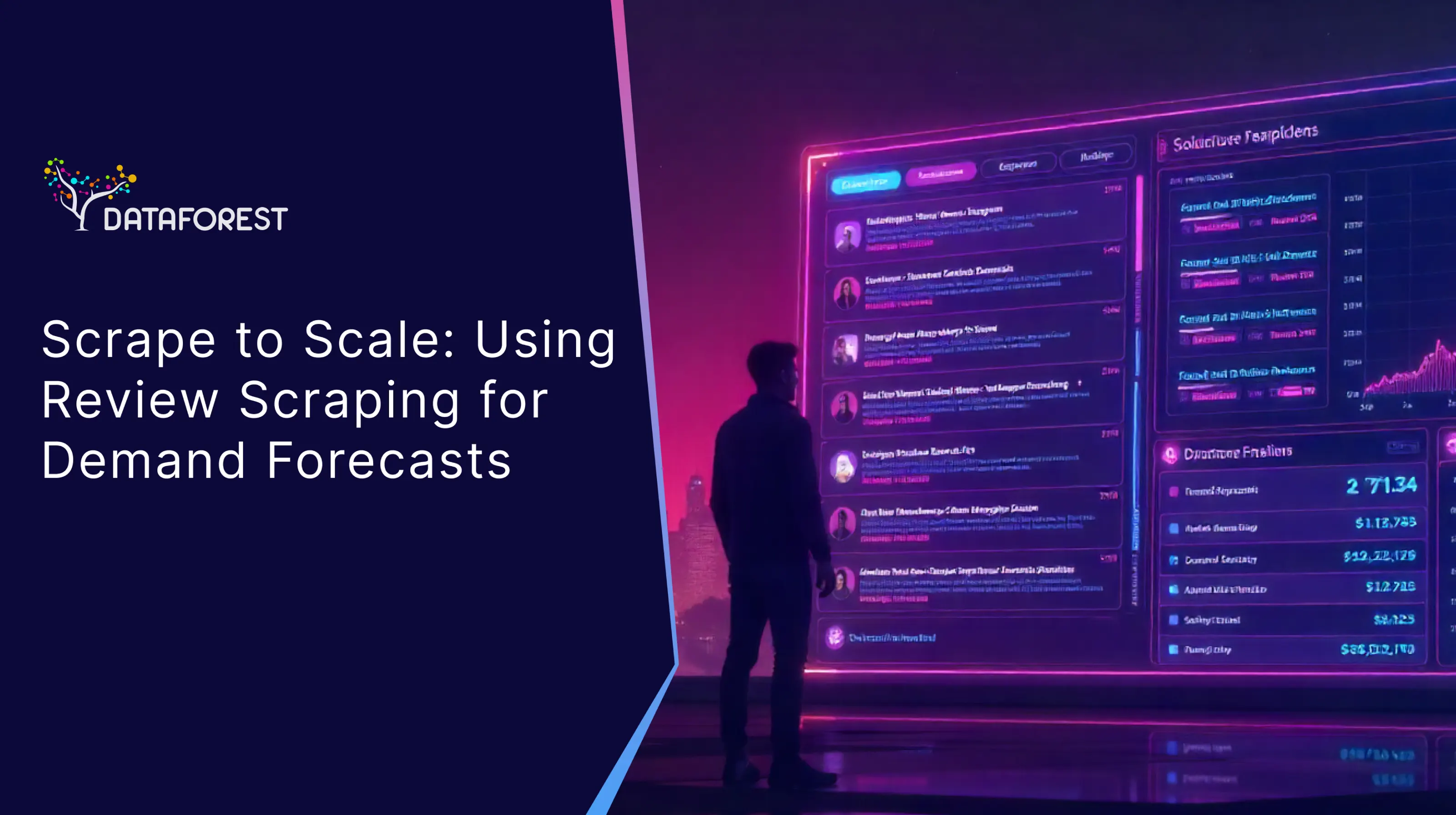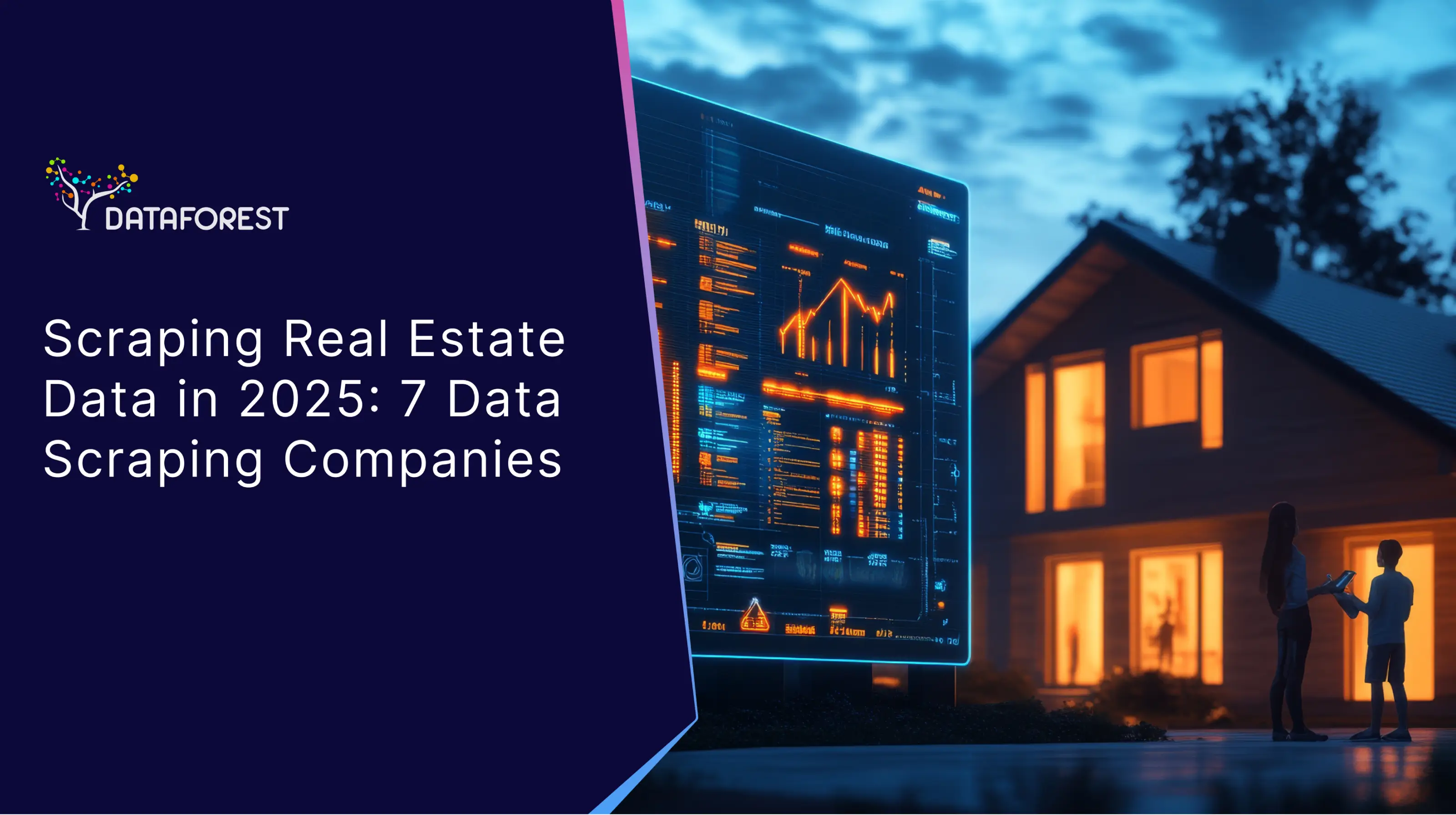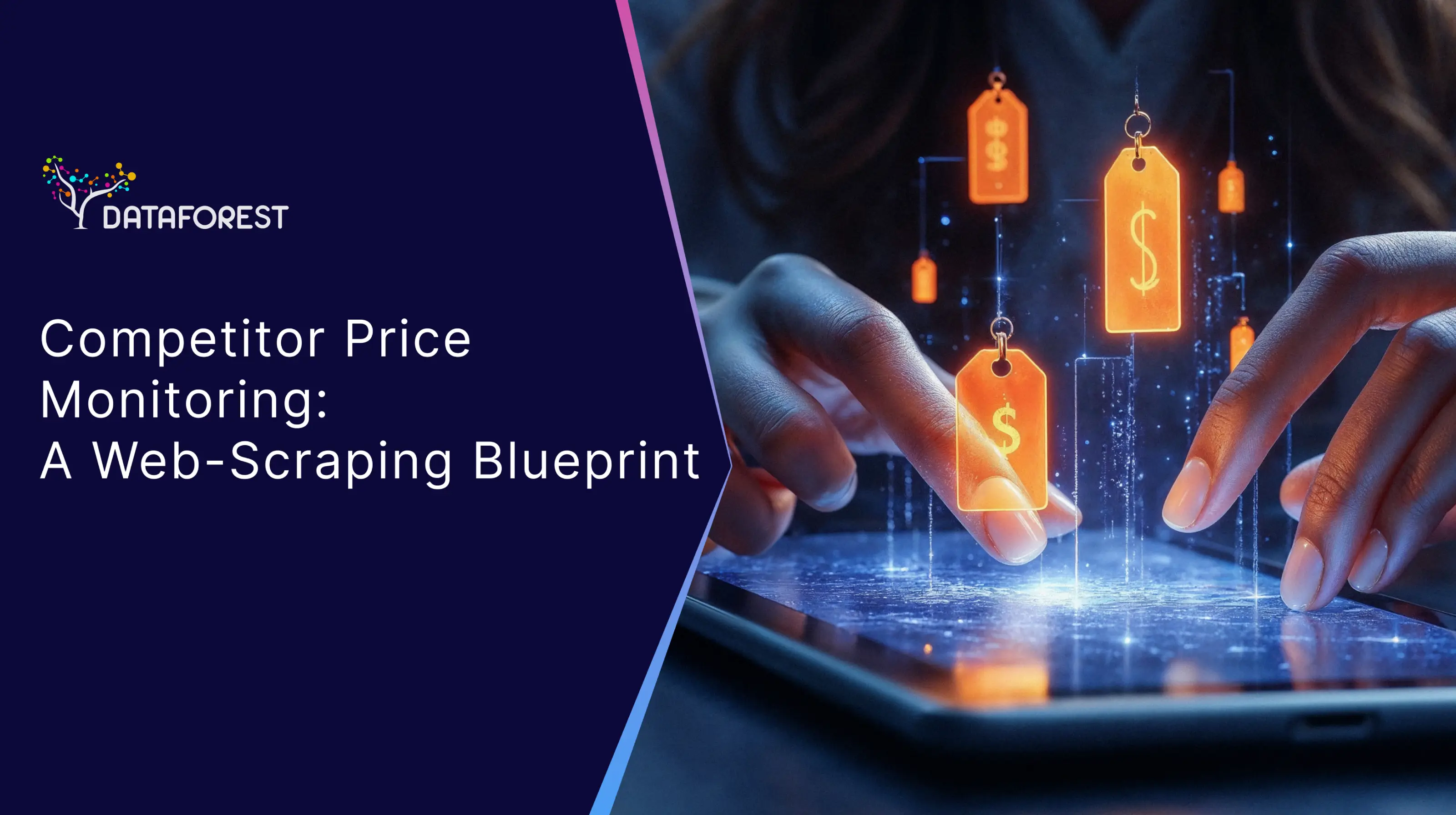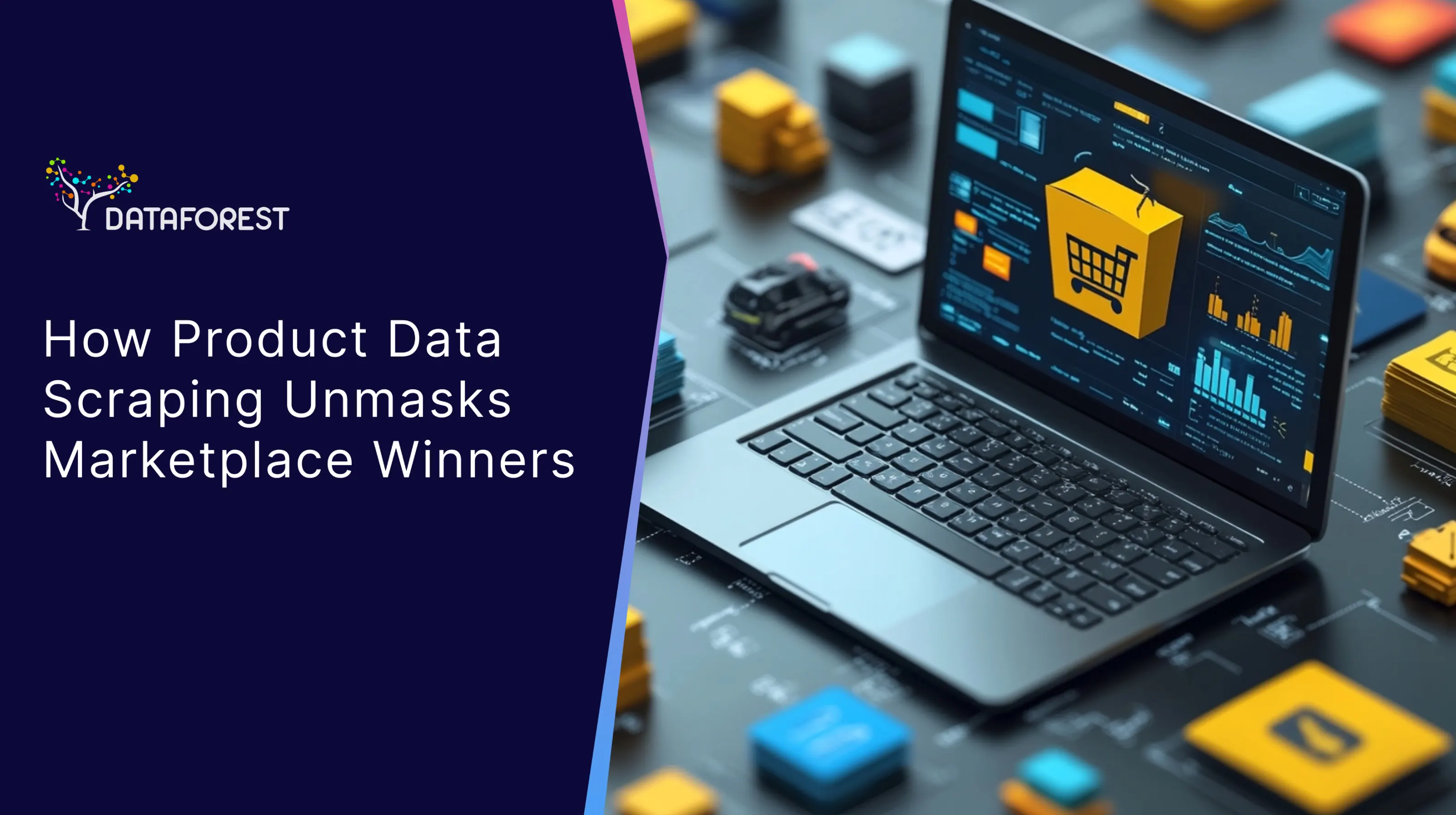From Raw Feedback to Strategic Foresight
In the current digital marketplace, the voice of the customer is the most valuable unstructured data stream for predicting future performance. Enterprises that still view customer reviews as mere reputational assets are overlooking a strategic goldmine. This is about harnessing the raw, collective intelligence of your market to inform high-stakes decisions with razor-sharp clarity. The future of enterprise strategy isn't being hashed out in boardrooms—it's being authored live, one customer review at a time, across the entire digital frontier.
The Strategic Value of Review Data for Enterprises
The aggregate of customer feedback represents a massive, real-time focus group. Systematically harnessing this data through ecommerce review scraping provides a direct line into the unfiltered thoughts and pain points of your target audience. For enterprise leaders, this translates from a tactical feedback loop into a strategic forecasting tool that directly impacts the bottom line. It’s the difference between reacting to market shifts and architecting them.
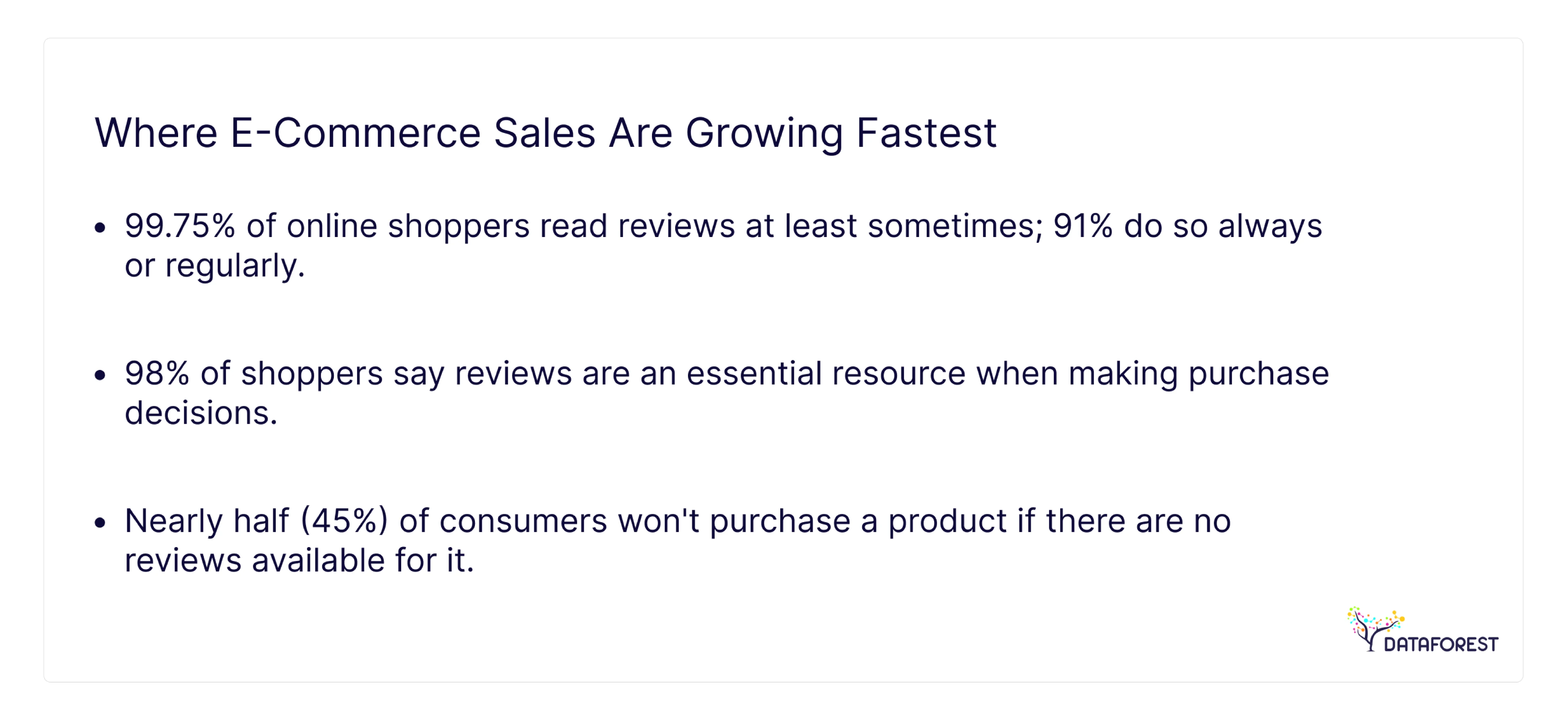
Forecasting Demand with Precision
Relying purely on historical sales data for demand forecasting gives you a rearview mirror perspective—it shows you where you've been, but not where the market is headed. The "why" behind consumer intent remains a blind spot. We change this by integrating intelligence from scraping reviews, fundamentally re-architecting the forecasting equation from reactive to predictive. By applying advanced customer sentiment analysis to review text, organizations can identify the specific features or issues that correlate with purchasing velocity.
A McKinsey report underscores this, stating that leveraging new data sources—including social media and product reviews—can reduce forecasting errors by as much as 30–50%. Imagine improving your inventory planning by precisely anticipating a demand spike because review analysis detected a viral trend. This is demand prediction from reviews in action—a core component of modern advanced planning systems that turns inventory into a dynamically managed asset rather than a sunk cost.
Identifying Product Strengths and Gaps at Scale
What makes your five-star product a success? And more importantly, why is your competitor's four-star product gaining market share? The answers are in the reviews. Large-scale review analysis allows you to move beyond the simple star rating and dissect the "why" behind the score.
Through sophisticated web scraping product reviews, a business can systematically tag and quantify mentions of specific attributes: "battery life," "user interface," "fabric quality." This granular data allows product teams to:
- Validate Feature Success: Quantify positive sentiment around a new feature to justify further investment.
- Identify Critical Flaws: This process unearths critical flaws that internal QA might miss, flagging recurring complaints so you can prioritize fixes that directly shore up customer satisfaction.
- Discover Unmet Needs: Simultaneously, it acts as a discovery engine, pinpointing features your customers are clamoring for and handing your product teams a validated, data-driven development roadmap.
This process, detailed in our work on AI-powered platforms for e-commerce, ensures R&D capital is allocated to initiatives with a proven market appetite.
Detecting Market Trends Before Competitors Do
Think of the market as a living organism; customer reviews are its real-time EKG. Trends and competitive vulnerabilities surface here raw and unfiltered, months before they're sanitized in industry reports. That sudden chatter about a 'work from home setup' for your monitor? Or the rising tide of complaints about a rival's latest software patch? These are not mere data points; they are the faint tremors that precede an earthquake, invaluable early-warning signals sent directly from the market. Capturing these signals is paramount. By implementing continuous review website scraping, an enterprise can construct a real-time market intelligence dashboard that visualizes these subterranean shifts. This proactive stance on сonsumer behavior analytics enables strategic pivots, such as adjusting marketing messaging or exploiting a competitor's weakness, before the opportunity becomes common knowledge.
The Technical Challenge — Why DIY Doesn’t Work at Scale
The strategic promise of review data is immense, but accessing it is a complex technical endeavor. Many organizations attempting to build in-house scraping tools find that enterprise-scale web scraping reviews is a fundamentally different challenge than a simple script. The DIY approach inevitably collides with the realities of the modern web.
Volume, Noise, and Structure: The Real Issues Behind Review Data
The first hurdle is the sheer scale and chaos of the data. A single popular product generates a torrent of reviews—a mix of slang, typos, and noise. You're dealing with the fact that over 80% of enterprise data is unstructured, a figure that's expanding at an exponential rate. This is where the real work begins, as the challenge splinters into two distinct, formidable problems: first, the brute-force mechanics of Extraction, which demands a robust infrastructure for web scraping across numerous sites, each with a different layout and anti-bot measures, requiring constant maintenance; and second, the alchemy of Transformation, because raw HTML is just noise until it's meticulously cleaned, structured, and translated into actual insight—a significant data engineering task before any analysis can even begin.
Limitations of Out-of-the-Box Tools
Think of off-the-shelf scrapers as infantry rifles—useful for small skirmishes, but entirely inadequate for the combined-arms warfare of an enterprise-level campaign. They lack the hardened resilience and bespoke engineering to withstand sustained pressure, invariably failing when confronted by:
- Sophisticated Anti-Scraping: Major e-commerce platforms deploy a digital fortress of CAPTCHAs, IP blacklisting, and browser fingerprinting. Breaching these defenses requires more than a simple tool; it demands a dynamic and intelligent proxy infrastructure.
- Data Quality: These tools cannot guarantee the accuracy of the extracted data and often break when a website updates its structure.
- Integration: Enterprise operations demand seamless data flow into BI dashboards or predictive analytics models, which standard tools cannot provide.
Legal and Ethical Boundaries in Reviews Scraping
Let's be clear: public data is not a regulatory free-for-all. The teeth of regulations like GDPR and CCPA are sharp, and PII has a nasty habit of hiding in plain sight, even within supposedly anonymized reviews. This is why an enterprise-grade review scraping service must be more than a tool—it must function as a compliance shield. It must operate within a robust compliance framework—scrupulously honoring robots.txt, throttling request rates to preserve site integrity, and deploying rigorous data anonymization. Partnering with a specialist in data scraping isn't just about better data; it's about mitigating existential legal and reputational risk.
How Data Forest Helps Enterprises Scrape Smart and Scale Fast
This is the intersection where Data Forest brings clarity. We don’t see review intelligence as an IT task; we treat it as a core business driver. Our enterprise services are purpose-built to bridge the chasm between chaotic web data and clear, actionable strategy. The entire approach rests on a bedrock of radical scalability, uncompromising data fidelity, and truly bespoke customization.
Scalable Review Scraping for Startups and Large Enterprises Alike
Whether you're targeting a single product or tracking entire categories across global domains, our architecture is primed for performance. We absorb the complexities of proxy warfare and bot evasion so your team can dedicate its energy to what matters: analysis and execution. Our experience with clients in the eCommerce and Retail sectors has proven our ability to deliver reliable data streams that power growth. We understand the unique challenges of scraping by review and have built the technology to overcome them.
Rapid Deployment and High-Quality Scaling at Any Complexity Level
Our managed service model is architected for velocity, delivering an initial, structured data payload in days, not months. As your requirements evolve, our architecture scales in lockstep. We deliver analysis-ready, high-fidelity data, removing the laborious and error-prone task of data cleansing from your team's plate. This unwavering commitment to excellence is the cornerstone of the DATAFOREST ethos, a principle that directly shapes our philosophy on customization.
Fully Customized: Your Data, Your Model, Your Workflow
We operate from a foundational premise: no two businesses share the same data DNA. That's why we work shoulder-to-shoulder with you, architecting a fully customized data schema that mirrors your unique analytical goals. This includes:
- Targeted Data Points: We extract the specific fields you need—from review text and star rating to reviewer history.
- Advanced Data Transformation: We can apply proprietary customer sentiment analysis models or use Natural Language Processing (NLP) services to tag key topics.
- Flexible Delivery: Receive your data via API, cloud storage, or direct database injection, formatted for your workflow.
This bespoke approach ensures the data you receive is not just comprehensive but immediately valuable.
Use Cases That Drive ROI
Web scraping product reviews delivers tangible value across multiple business functions, moving from a cost center to a profit driver.
Dynamic Pricing Based on Customer Feedback Trends
True price elasticity becomes achievable when you correlate sentiment scores directly with demand signals. A rising tide of reviews lauding your product’s quality is more than a vanity metric; it’s the strategic air cover needed to justify a price increase. Conversely, a dip in sentiment acts as a warning flare, signaling the precise moment for a targeted promotion to defend your market share. This creates a living pricing model, one that flexes in real-time with the market’s perceived value.
Product Development Aligned with Unfiltered Voice of the Customer
Leveraging user review insights is arguably the most potent application for R&D. Instead of relying on the insulated feedback from surveys, scraping customer reviews opens up a continuous, unvarnished firehose of what your market actually thinks. One of our key demand forecasting case studies highlights how a client prioritized their product roadmap by quantifying feature requests from thousands of user comments, leading to a measurable uplift in customer satisfaction.
Benchmarking Competitors Through Their Own Reviews
Competitive review benchmarking acts as a powerful strategic lens. Methodically scraping reviews from competitor product pages allows you to build a forensic scorecard of their strengths and, crucially, their exploitable weaknesses. The analysis invariably surfaces actionable intelligence like:
- Persistent quality control issues.
- Gaps in their customer service fabric.
- Deficiencies in their feature set.
This intelligence is invaluable for marketing and product strategy, allowing you to position your offerings as the direct solution to your rival's documented shortcomings. Many top web scraping use cases center on this form of competitive intelligence.
Why Now? Timing and Opportunity for Review-Based Intelligence
The window of opportunity to build a competitive advantage from review intelligence is closing. The practice is moving from an innovator's tactic to a mainstream strategy. Early adoption provides a compounding advantage, while inaction becomes a costly liability.
Reviews Are Growing, Competition Is Faster — Insights Must Be Real-Time
The volume of online reviews is exploding. As the Spiegel Research Center famously found, simply displaying reviews can boost conversion rates by an astonishing 270%, which only incentivizes platforms to chase even more customer feedback. This massive growth in ecommerce data means manual analysis is no longer viable.
In this environment, insights must be near real-time to be effective. The ability to conduct continuous review scraping and analysis is becoming table stakes for leadership in the retail sector.
The Business Risk of Ignoring Customer Sentiment at Scale
In today's digital ecosystem, ignoring the collective voice of your customers isn’t just a mistake; it’s a strategic blunder of the first order. A single unresolved issue, amplified by hundreds of negative reviews, quickly poisons brand equity, stalls revenue, and rolls out the red carpet for your competitors. Lacking a systematic way to process this flood of feedback, an enterprise is, for all intents and purposes, flying blind. The risk profile extends far beyond reputation. By not leveraging sales forecasting from reviews, a company might overstock a product with declining sentiment or miss the chance to capitalize on one with surging organic buzz. As detailed in discussions on Big Data analytics use cases, ignoring such a rich data source is a self-imposed strategic disadvantage.
Charting Your Course with Data-Driven Intelligence
The pivot from viewing customer feedback as a collection of opinions to harnessing it as a predictive analytical engine is the defining characteristic of a data-mature organization. Scraping customer reviews is the non-negotiable first step in this evolution. It provides the raw material to build sophisticated models for demand prediction from reviews, conduct forensic competitive review benchmarking, and align your product lifecycle with the authentic voice of the market. This is no longer a niche capability; it's a strategic imperative for any enterprise serious about growth.
Let’s connect and discuss your specific strategic data requirements.
Frequently Asked Questions
How accurate is demand forecasting based on reviews?
When fused with traditional sales data, its accuracy can be exceptionally high. Independent research from firms like McKinsey confirms that integrating new data sources like reviews can slash forecasting errors by a staggering 30-50%. The precision hinges on the quality of the data and the sophistication of the analytical model. By using advanced customer sentiment analysis to identify specific drivers of intent, the forecast evolves beyond simple correlation to a more causal understanding of consumer behavior, which we detail in our Predictive Analytics as a Service offering.
What platforms can you scrape (Amazon, Etsy, niche marketplaces)?
Our review scraping services are engineered to be platform-agnostic. We architect and maintain resilient scrapers for nearly any public website imaginable—from global giants like Amazon and Walmart to specialized marketplaces like Etsy and G2, and even niche, industry-specific forums. Our technology is engineered to navigate diverse site architectures and sophisticated anti-scraping defenses, guaranteeing consistent data delivery from any source. Tapping into diverse web scraping strategies is a core part of our expertise.
Can you extract reviews in multiple languages and local markets?
Absolutely. Our scraping reviews infrastructure is fully capable of extracting data from different regional domains and in multiple languages. Furthermore, our Natural Language Processing (NLP) services can be configured for sentiment and topic analysis in various languages, allowing you to understand the nuances of feedback in each market. This is crucial for trends analyzed in our article on LLMs for Retail.
Can your solution integrate review data into our BI or analytics systems?
Yes. Seamless integration is a core principle. We deliver clean, structured data ready for direct ingestion into your existing systems, whether it's Tableau, Power BI, Snowflake, or custom models. We provide flexible delivery options (API, S3, SFTP, etc.) to ensure the data flows directly into your workflow without extensive internal IT resources.
Can we monitor competitor reviews and extract their weak points?
Yes, this is one of the most powerful applications of product review scraping. We can set up continuous monitoring of your key competitors to perform competitive review benchmarking. The system will systematically extract product reviews and apply sentiment analysis to automatically flag recurring complaints and service gaps, providing your teams with a data-driven roadmap for exploiting competitive weaknesses.
How do you ensure the ethical and legal compliance of scraping activities?
Our methodology is built on a foundation of ethical data stewardship. This means scrupulous adherence to robots.txt directives, crawl rates carefully calibrated to ensure zero site disruption, and an unwavering focus on publicly available, non-proprietary data. For potent regulations like GDPR and CCPA, our robust protocols are engineered specifically to prevent the ingestion or processing of any Personally Identifiable Information (PII). To get into the specifics of our methodology, we invite you to contact our team.
How long does it take to start receiving data?
Our deployment model is built for velocity. For the majority of platforms and standard data requirements, we can stand up an initial pipeline and begin delivering structured, high-quality data in just a few days. While highly complex or multi-source custom projects might extend that timeline slightly, our primary objective is always to accelerate your time-to-insight. We take great pride in the proven efficiency and deep expertise of the DATAFOREST team.


